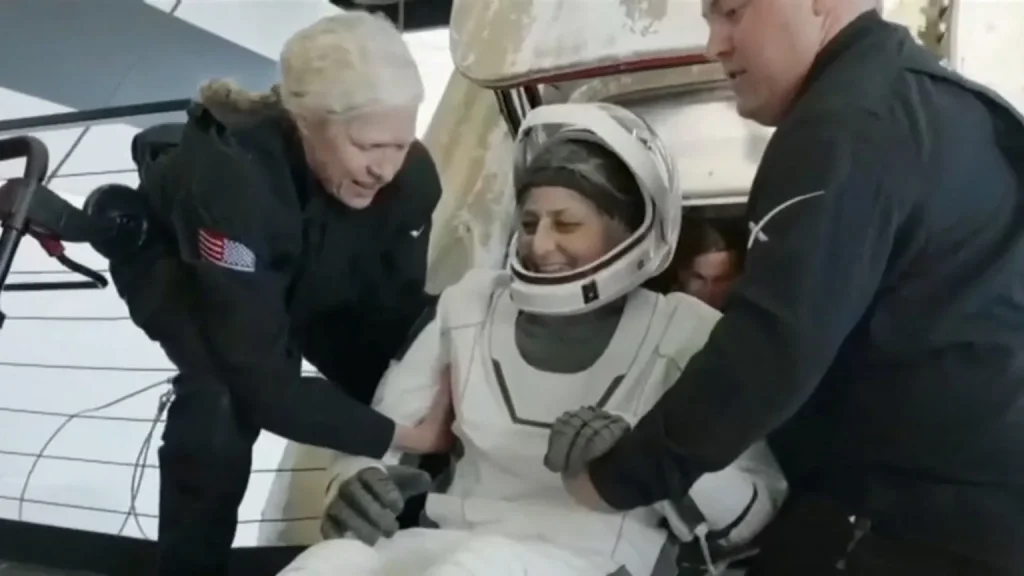
After what was supposed to be an eight-day mission turned into an unexpected nine-month stay aboard the International Space Station (ISS), astronauts Suni Williams and Butch Wilmore have returned to Earth. Now, their real challenge begins—recovering from the harsh effects of prolonged weightlessness on the human body.
“Space is by far the most extreme environment that humans have ever encountered, and we’ve just not evolved to handle the extreme conditions,” says Professor Damian Bailey, an expert in human physiology at the University of South Wales.
While floating in microgravity might initially feel like a vacation, with less strain on the heart, muscles, and bones, the long-term effects are severe. “Every month, about 1% of their bone and muscle mass withers away—it’s accelerated ageing,” Prof. Bailey explains.
The loss of muscle and bone strength makes returning to Earth physically taxing. Video footage of Williams and Wilmore exiting their capsule shows them needing assistance, as their bodies struggle to readjust to gravity. “It will probably take them a few months to build up their muscle mass,” says Dr. Helen Sharman, Britain’s first astronaut, adding that full bone recovery could take years.
Astronauts follow strict exercise regimens while in space to counteract these effects, spending two hours daily on treadmills, cycling machines, and resistance training. However, some changes—such as shifts in bodily fluids, vision impairment, and neurological disorientation—can have lasting consequences.
“Those first two or three days back on Earth can be really punishing,” says Tim Peake, who spent time on the ISS in 2015. From dizziness and blurred vision to potential long-term bone density loss, the toll of space travel is significant.
Williams and Wilmore now face an intensive rehabilitation program, but their mission has furthered critical research on how extended spaceflight affects the human body—an essential step toward future deep-space exploration.








